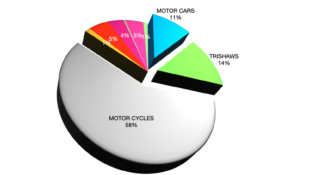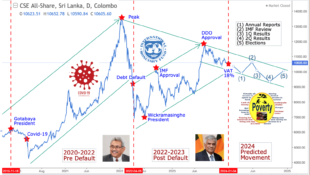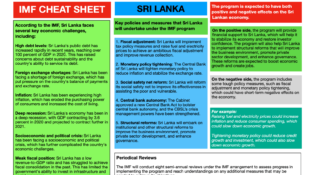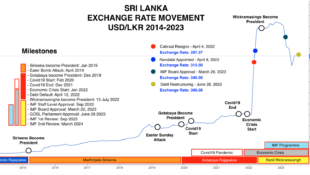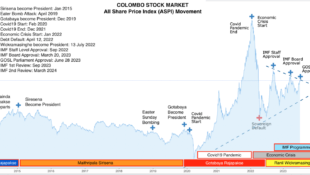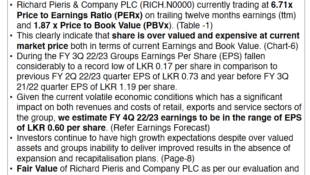Slstock
A STOCKBROKER recently commented that he thought the Australian sharemarket had hit the bottom of the cycle and was ready to gradually move higher. Could it be that, after four years and eight months, the ghastly bear market in which the All Ordinaries Index is down 38.5 per cent from its all-time high is over?
Is the bear about to wander off into the woods? One way to answer this question is to look at how sharemarkets behave at the end of a major decline?
The All Ordinaries Index has rallied a healthy 4.6 per cent in 46 days since the market bottomed on June 4. While this is a nice response to the disasters of May, it is not the typical end to a bear market. A look back through history reveals that equities nearly always enter a swan dive in the final months of a bear market. Since 1900 the Dow Jones Industrial Average has fallen 20 per cent or more on 16 occasions in the final year of a downtrend in shares.
On all of these occasions the market's decline accelerated into the ultimate bottom before bouncing sharply to form a V-shape. The bounce is usually about 10 per cent in the first few months.
The only real exception to this is when the market cuts a V-shape bottom only to collapse again soon afterwards to form another V-shape. This is commonly referred to as a double bottom and has occurred on seven of the 16 occasions the market sank 20 per cent at the end of a downtrend.
A classic example of this was at the end of the tech wreck. This double bottom took about six months to play out, but formed the basis for a multi-year rally.
The Australian sharemarket has concluded bear markets in a similar fashion. The market will fall for a period, try to rally and then in the end, exhausted investors dump stocks before a major rally ensues. Even the most mild bear market, such as the one during 2002, saw the All Ordinaries stumble almost 13 per cent in just over two months at the beginning of 2003. Within three months the market had recovered a robust 14 per cent.
In fact, there has never been a gentle end to a bear market or a timid start to a new bull market.
Unfortunately, the rebound in the Australian market from the 10.5 per cent decline in the month to June 4 does not qualify for a V-shaped recovery. In fact it looks more like an L-shape. This suggests there might be more bad times ahead.
So much for the technical view.
Fundamentally, it is far more difficult to identify the typical set-up for the beginning of a new bull market. The major secular bear markets in the US over the past 100 years have ended on extremely dire notes. The Depression-inspired bear market from 1929 to 1942 effectively came to a close during the heady days of World War II. At the time there was no certainty who would triumph in the battle, but still the market took a view and it proved correct about three years later.
The curtain fell on the protracted bear market of the 1970s when Federal Reserve chairman Paul Volcker took the bit between his teeth and jacked up interest rates to kill the bogey of inflation.
Initially the sharemarket took cover, but within two years US equities started one of the greatest bull market runs in history.
In Australia, the recovery usually revolves around cycle low interest rates that manage to stimulate economic activity in key sectors such as housing, retail and transport. We are currently enjoying an easing in monetary policy that may last until the end of 2012.
There are major economic hurdles facing the globe. All of these are well documented, with the critical ones being the debt loads in Europe and the US. The US market has chosen to ignore these problems over the past three years, preferring to run a socialist agenda, with the Federal Reserve subsidising investors by printing money.
As we sit here in July, the market has high expectations that chairman Ben Bernanke will oblige again some time before September. This, combined with solid US earnings, has the market on another rally. However, more money pumping does little to address the issue of getting the national balance sheet in order.
Bernanke would be well advised to observe the harsh stance Volcker took back in the early 1980s.
A refusal to support the market with money printing might just cause that last-gasp selloff that strong-arms governments to take a tough stand against the problems facing the world. In other words, the marketplace will force the issue.
A refusal by the Federal Reserve to step up to the plate would be doubly powerful given the "fiscal cliff" the US faces in 2013.
A plan to attack the debt problem in the new four-year presidential term could initially scare markets; it could also inspire by providing a road map out of the mess. As history shows, markets have great resistance when things look dire.
http://www.theage.com.au/business/history-shows-the-path-to-recovery-is-never-smooth-20120722-22i5f.html
 would enable you to enjoy an array of other services such as Member Rankings, User Groups, Own Posts & Profile, Exclusive Research, Live Chat Box etc..
would enable you to enjoy an array of other services such as Member Rankings, User Groups, Own Posts & Profile, Exclusive Research, Live Chat Box etc.. 
 Home
Home












